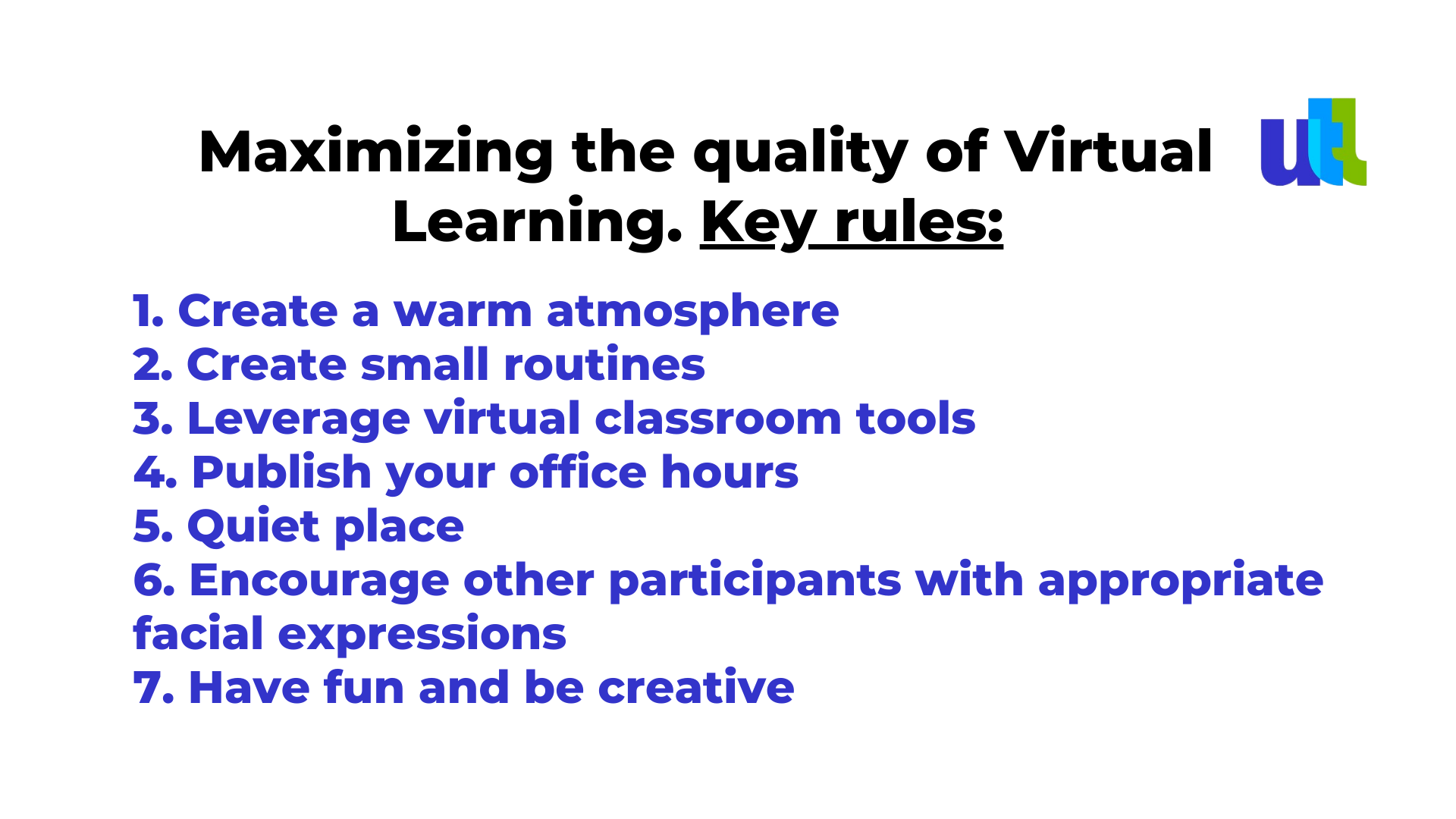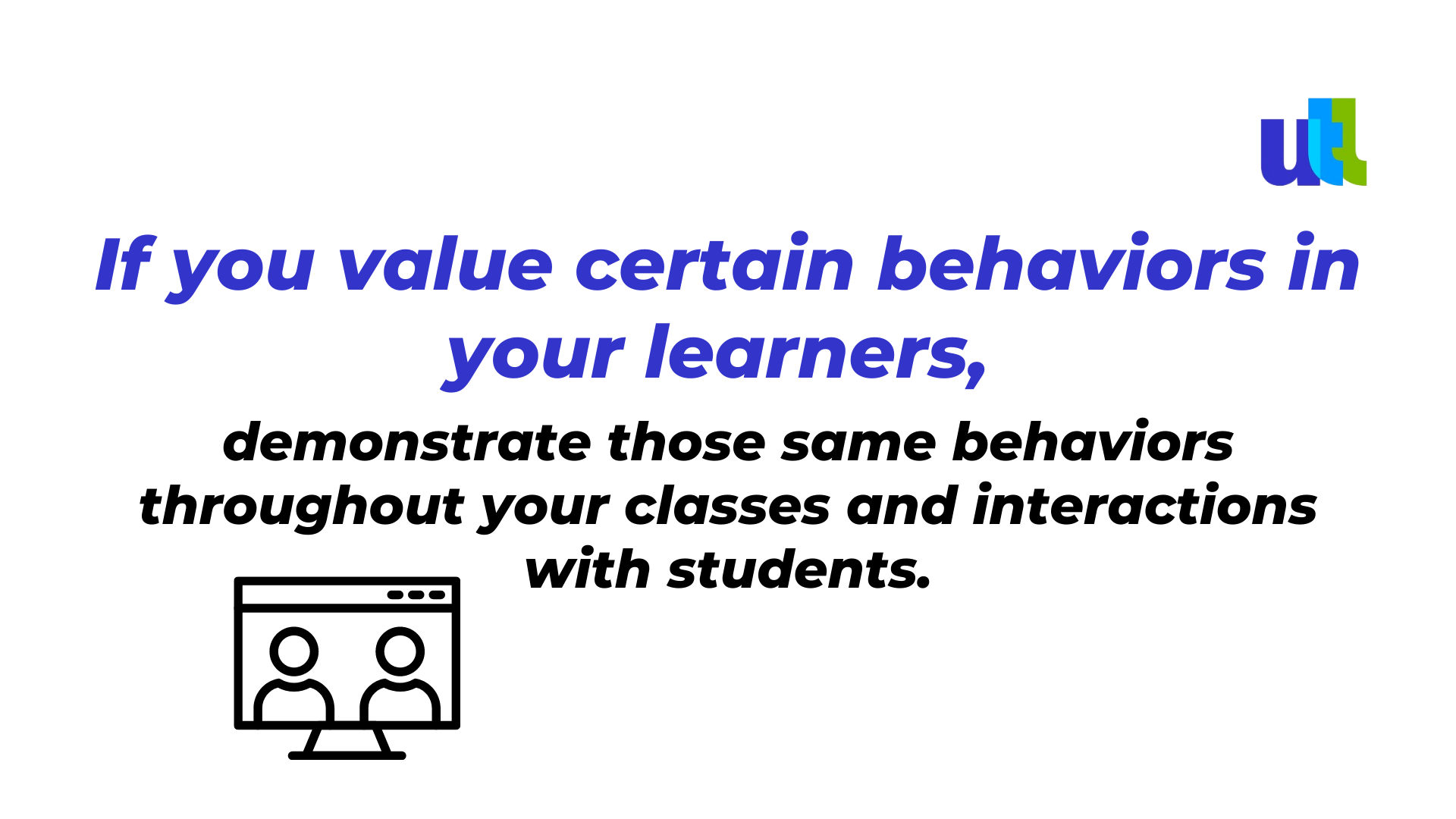Whether you’re in high school or going through professional training, teaching should be a fun and rewarding experience. But often students or trainees struggle to follow virtual classes, get distracted, or forget to respect their classmates and colleagues.
So be proactive about avoiding those typical problems while studying virtually with our set of virtual classroom rules that are aimed at developing a positive learning environment - where learners are engaged, collaborative, and excited to learn.
This article is for schoolteachers and school management teams, university professors, organizations, and private teachers aiming at doing their best while organizing virtual instruction.
Teaching in the Metaverse
Nowadays, you can take one-off training courses or even complete degree programs, fully online, without leaving your house, thanks to virtual learning environments like Futurework Land.
The key distinction of a virtual classroom is that it takes place in a live, synchronous setting. See it as studying in the Metaverse.
Online coursework can involve the watching of pre-recorded, loaded material, but virtual classroom settings involve live interaction between instructors and participants (their unique 3D avatars). And although this study mode has proven itself to bring greater results, it still has to deal with some common challenges.
However, with the following handy virtual classroom rules in place, you can minimize those issues, keep classes focused and effective, and help create a safe and positive learning environment for your students.
Maximizing the quality of Virtual Learning. Key rules

Classrooms should be a safe space to express thoughts and share ideas, debate them to the intellectual benefit of all participants, without egoism, discrimination, or profanity.
The best way for teachers to set their expectations in virtual and hybrid learning classes is to demonstrate the best approaches and practices themselves.

Also, it is important to formally establish your virtual learning rules from the outset. As an example, you can place them in a PDF document that you can send out before your first class, and then reiterate them early in the course (or whenever you feel it might be needed). Though, try always to do this in a positive, non-judgmental way.
1. Create a warm atmosphere
This is the very first thing. Focus on creating a community in your classroom, where everyone feels comfortable and welcomed, so that the students will want to follow the rules.
2. Create small routines
Just like in our everyday lives when we enjoy our daily/weekly traditions, learning routine also fosters a calmer environment.
Furthermore, predictable and well-structured lessons make online classes more productive. The students know what to expect, enabling them to fully focus on the learning material.
3. Leverage virtual classroom tools
Virtual Classroom platforms like FutureWork Land offer numerous tools that can help maintain a productive lesson. And although it might take time to get used to the new possibilities and smart skills of these virtual spaces, it will pay off in the long term.
For example, breakout rooms separate students and create smaller isolated group discussions and collaborations. The virtual hand raise ensures every student can ask for help or a better explanation without interrupting the lesson, while collaborative whiteboards focus everyone’s attention on the topic in an engaging way.
4. Publish your office hours
Make sure to have special hours to connect with your students individually and provide them with virtual assistance. Remote education might make some students feel isolated and left behind. One-to-one time will help your students feel seen and supported, thus, increasing motivation and participation in class.
Virtual classrooms in the Metaverse allow you to create a separate “office” space for such meetings.
5. Quiet place
Ask every learner to choose a quiet space where they can join the class without any interruptions, which will help set the tone for the group as a whole.
There is no need in providing too much guidance here, but the general idea is that once a class is underway, every learner is in an encroachment-free zone with no background noise.
The same goes for the microphone, ask your students to turn it on only when their “avatar” needs to speak.
6. Encourage other participants with appropriate facial expressions
Virtual classes in the Metaverse allow students to use their avatars to express real-time emotions and reactions.
It is a well-known fact that warm and positive interactions throughout classes help learners feel motivated, confident, and ready to learn.
7. Have fun and be creative
If everyone follows the simple rules and contributes to the shared objective of all class members, virtual classrooms become not only the most advanced, but also a fun and efficient way to learn remotely. Make sure to approach it that way and be creative with the added possibilities that virtual classrooms offer.
3D Virtual classrooms are undoubtedly much easier for students to learn new subjects and skills. Learning in the Metaverse makes it possible for working professionals, people with busy home lives, or people with fewer financial resources to grow their knowledge in a shared virtual space. In a reliable and convenient way.
Take a leap in the right direction – implement the FutureWork Land powerful Virtual Classroom solution, purposely built with teaching and learning in mind.
For free consultation about virtial learning click here.
----------------------------------------------------------------------------------------------
View the full presentation:
WRITTEN BY
Sofia Kutko
2023-01-20














































































































































































